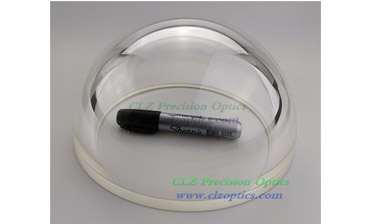Why Must Optical Glass Have a High Degree of Transparency?
Mar. 12, 2021
As a Dome Lens Manufacturer, share with you.
The difference between optical glass and other glasses is that as an integral part of the optical system, it must meet the requirements of optical imaging. Therefore, the judgment of the quality of optical glass also includes some special and stricter indicators.
Optical Glass Lense
Today we will talk about the importance of optical glass that must have a high degree of transparency.
The image brightness of the optical system is proportional to the transparency of the glass. The transparency of optical glass to light of a certain wavelength is expressed by the light absorption coefficient Kλ. After the light passes through a series of prisms and lenses, part of its energy is lost by the interface reflection of the optical parts and the other part is absorbed by the medium (glass) itself. The former increases with the increase of the refractive index of the glass. For high-refractive-index glass, this value is very large. For example, the light reflection loss of one surface of counterweight flint glass is about 6%. Therefore, for an optical system containing multiple thin lenses, the main way to increase the transmittance is to reduce the reflection loss on the lens surface, such as coating the surface with an anti-reflection coating. For large-sized optical parts such as the objective lens of an astronomical telescope, the transmittance of the optical system is mainly determined by the light absorption coefficient of the glass itself due to its large thickness. By improving the purity of the glass raw materials and preventing any coloring impurities from mixing in the entire process from batching to smelting, the light absorption coefficient of optical glass can generally be made less than 0.01 (that is, the light transmittance of glass with a thickness of 1 cm is greater than 99% ).
Optical glass lens molding technology is a high-precision optical component processing technology. It is to put the softened optical glass into a high-precision mold, and under the condition of heating, pressure and oxygen-free, it can be directly molded at one time. Use required optical parts. Since this technology can directly press and form precise aspherical optical glass parts, it has since created an era in which aspherical glass optical parts can be widely used in optical instruments. Therefore, it also brings new changes and developments to the optical system design of optoelectronic instruments, which not only reduces the size of the optical instrument, reduces the weight, saves materials, reduces the workload of optical parts coating and workpiece assembly, and reduces costs. , But also improved the performance of optical instruments and improved the quality of optical imaging.
Our company also has Optical Glass Lense on sale, welcome to contact us.



















